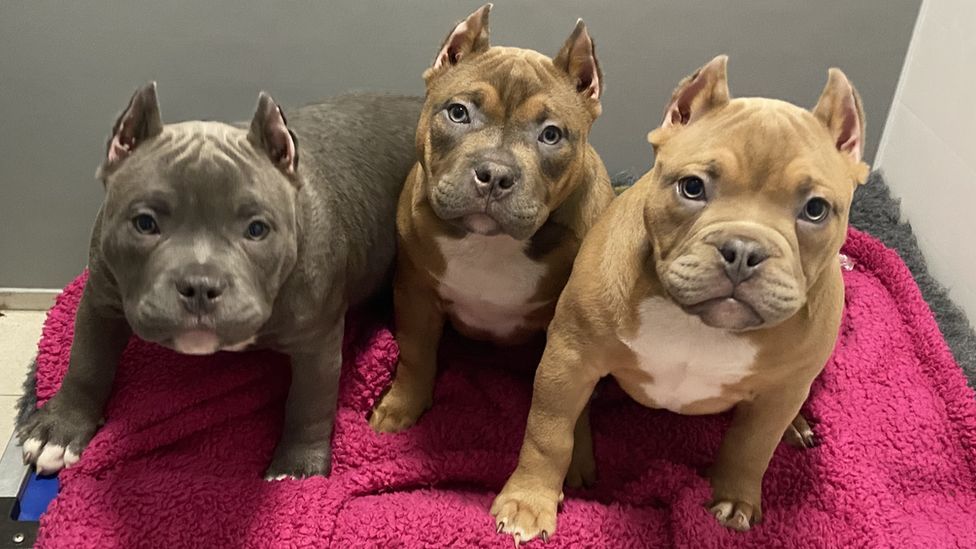Key Takeaways:
- Cropping dog ears is a controversial practice that involves surgically altering the shape of a dog's ears for cosmetic purposes.
- While some argue that cropping can prevent ear infections and improve a dog's appearance, others believe it is unnecessary and can cause pain and complications.
- The decision to crop a dog's ears should be made carefully, considering the breed, individual health risks, and potential legal restrictions in certain countries or states.
- If opting for ear cropping, it is crucial to choose an experienced veterinarian who follows ethical guidelines and prioritizes the dog's well-being during and after the procedure.
- Proper aftercare following ear cropping is essential to minimize discomfort, prevent infections, and ensure proper healing. Regular check-ups with the veterinarian are necessary to monitor progress and address any concerns.
Are you a dog lover? If so, then you know how important it is to ensure your furry friend is healthy and happy. One aspect of dog care that often sparks debate is the practice of cropping their ears. While opinions on this topic may vary, understanding the practice and its potential benefits can help you make an informed decision for your canine companion. In this article, we will delve into the world of ear cropping, exploring its history, reasons behind it, and the impact it has on dogs' lives. By gaining insight into this controversial subject, you will be equipped with valuable knowledge to better care for your beloved pet. So let's embark on this journey together and discover the fascinating world of ear cropping!
What is cropping dog ears and why do some people choose to do it?
When we talk about cropping dog ears, we are referring to a surgical procedure where a portion of a dog's ear is removed. This is usually done when the dog is young, between 6 to 12 weeks old. Some people choose to crop their dog's ears for various reasons:
- Aesthetic purposes: Some dog owners believe that cropped ears give their dogs a more attractive or intimidating appearance.
- Breed standards: In some breeds, such as Doberman Pinschers or Boxers, cropped ears are considered part of the breed standard. This means that if a dog participates in conformation shows or competitions, having cropped ears can enhance its chances of winning.
- Historical tradition: Ear cropping has been practiced for centuries in certain cultures and was originally done for practical reasons like protecting hunting dogs from injuries during hunts.
How is the procedure of cropping dog ears performed, and does it cause any pain or discomfort for the dogs?
The procedure of cropping dog ears involves removing a portion of the ear flap (pinna) and then shaping and suturing the remaining tissue. It is typically performed by a veterinarian under general anesthesia. Although anesthesia ensures that the dogs do not feel pain during the surgery, they may experience discomfort during the recovery process.
After the surgery, dogs may have their ears bandaged to protect them and promote healing. They may also be prescribed pain medication to manage any discomfort. It's important for owners to follow post-operative care instructions provided by their veterinarian to ensure proper healing and minimize any potential pain or complications.
Are there any health benefits or risks associated with cropping dog ears?
While some people believe that cropping dog ears has health benefits, there is limited scientific evidence to support these claims. In fact, ear cropping is considered an elective cosmetic procedure and not medically necessary.
However, it's important to note that there are potential risks and complications associated with ear cropping:
- Infection: The surgical site can become infected if proper care is not taken during the healing process.
- Pain and discomfort: Dogs may experience pain and discomfort during the recovery period.
- Altered ear function: Cropped ears may have reduced ability to communicate through ear movements and may affect their hearing abilities.
- Regrowth or deformities: In some cases, the cropped ears may not heal properly, leading to regrowth of tissue or deformities.
What are the different styles of cropped ears for dogs, and how do they look different?
There are several different styles of cropped ears for dogs, and each style gives a distinct appearance. Here are a few common styles:
Show Crop
The show crop style involves removing a significant portion of the ear flap, leaving only a small triangular shape at the top. This style is often seen in breeds like Doberman Pinschers and Great Danes in conformation shows.
Battle Crop
The battle crop style involves removing less of the ear flap compared to the show crop. The remaining ear stands erect with a pointed tip. This style is commonly seen in Boxers and American Pit Bull Terriers.
Teddy Bear Crop
The teddy bear crop style involves a shorter and rounded ear shape, resembling the ears of a teddy bear. This style is often chosen for smaller breeds like Miniature Schnauzers or French Bulldogs.
It's important to note that the specific style of cropped ears can vary depending on the breed and individual preferences of the dog owner.
Why do opinions on cropping dog ears differ around the world?
Opinions on cropping dog ears vary around the world due to cultural, ethical, and legal differences. Here are some reasons why opinions differ:
- Cultural traditions: In certain countries or regions, ear cropping has been a long-standing tradition rooted in cultural practices. These traditions may view cropped ears as a symbol of status, protection, or aesthetics.
- Animal welfare concerns: Many countries have implemented stricter animal welfare laws that prohibit or heavily regulate cosmetic procedures like ear cropping. These laws aim to protect animals from unnecessary pain and suffering.
- Evolving attitudes: Over time, societal attitudes towards animals have changed, with an increased emphasis on their well-being and natural appearance. This shift in mindset has led to a decrease in acceptance and popularity of ear cropping in some areas.
Are there alternative methods to achieve a similar look without cropping a dog's ears?
Yes, there are alternative methods available to achieve a similar look without resorting to surgical ear cropping:
- Taping and splinting: For certain breeds with naturally floppy ears, taping or splinting techniques can be used during their early development stages to encourage the cartilage to stand erect. This method is temporary and does not involve any surgical intervention.
- Earpins or gluing: Some products, such as earpins or glue, can be used to temporarily shape a dog's ears into an upright position. These methods are non-invasive and reversible.
- Artificial ears: In some cases, prosthetic or artificial ears can be used to give the appearance of cropped ears without any surgical alteration. These artificial ears can be attached securely and comfortably for aesthetic purposes.
It's important to consult with a veterinarian or professional dog handler before considering any alternative methods to ensure they are safe and appropriate for your dog's breed and individual needs.
In conclusion, the practice of cropping dog ears involves surgically altering a dog's natural appearance. While some argue it is necessary for certain breeds, others believe it is unnecessary and can cause harm to the dog. It is important to consider both sides before forming an opinion on this controversial topic.
What is the point of cropping dog ears?
Trimming a dog's ears or tail does not provide any benefits and can actually harm their health, behavior, and overall well-being. This procedure is typically done for purely cosmetic reasons, often because the owner wants the dog to have a certain appearance.
Is cropping a dog's ears animal abuse?
According to Dr Samantha Gaines, an expert on dog welfare at the RSPCA, ear cropping is a painful procedure that serves no purpose for the dog. Despite what breeders may argue, cropping a dog's ears does not have any benefits and can actually harm their health, behavior, and overall well-being in both the short and long term.
Is ear cropping painful for dogs?
Indeed, this procedure causes discomfort. The ear consists of highly sensitive tissue, and this procedure is entirely unnatural and painful. It is disheartening that veterinary professionals in certain countries continue to perform ear cropping, despite its purely cosmetic nature.
Do vets agree with ear cropping?
Various veterinary organizations, like the AAHA, CVMA, and Australian Veterinary Association, as well as the AVMA, are against the practice of cosmetic cropping.
What dog breeds need their ears cropped?
Some of the most popular dog breeds that often have their ears cropped include Boxers, Doberman Pinschers, Bully breeds, certain Mastiff breeds, Kane-corso, Beauceron, Manchester terrier, and Schnauzer, among others. Many people are familiar with the appearance of Dobermans or Great Danes with cropped ears as it is a desired aesthetic.
Are dogs awake during ear cropping?
Ear cropping is usually carried out on puppies aged between 6 and 12 weeks. When conducted by a veterinary professional, the procedure is performed with the use of general anesthesia. Pain medication is given to reduce any discomfort experienced during the procedure.

















